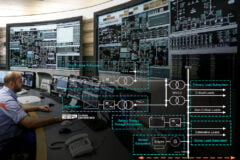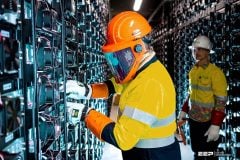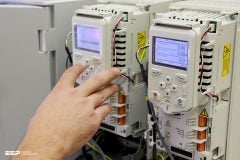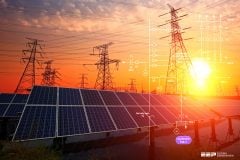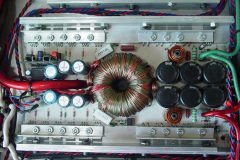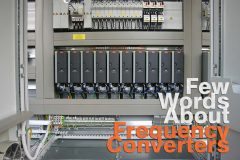Distributed Energy Resources (DERs)
The global energy landscape is undergoing a transformative shift, with Distributed Energy Resources (DERs) such as solar photovoltaics, wind turbines, battery energy storage systems, and controllable loads becoming increasingly prevalent in modern distribution networks.

This article explores the planning, control, and market integration aspects of DERs in future distribution grids, focusing on one of the most critical operational scenarios: island mode operation. When a portion of the grid operates autonomously, it must maintain voltage and frequency stability, ensure adequate load-generation balance, and protect against faults, all without support from the bulk power system.
These technical challenges are further compounded when transitioning between grid-connected and island states, where synchronization, protection coordination, and anti-islanding mechanisms become essential.
The distinction between intentional and unintentional islanding is vital for grid operators and DER designers. While intentional islanding, such as in microgrids or critical infrastructure, is a planned and controlled event, unintentional islanding poses serious risks including personnel safety hazards, equipment damage due to out-of-phase reconnection, and compromised protection reliability.
Detecting and preventing such scenarios requires a mix of passive, active, and communication-based techniques, each with specific strengths and limitations.
The article also provides a brief review of the regulatory frameworks governing anti-islanding requirements across different regions, including IEEE 1547-2018 (USA), IEC 62116 (international), UL 1741 SA (USA), and G99 (UK). These standards define functional behavior, response times, and test procedures for DER anti-islanding capabilities, ensuring safety and interoperability in diverse grid environments.
By covering technical, operational, and regulatory dimensions, this article aims to provide utility engineers, protection specialists, and DER developers with a comprehensive understanding of island mode operation and anti-islanding protection in DER-integrated distribution systems.
As the power sector evolves toward a more decentralized architecture, mastering these aspects is crucial for maintaining grid reliability, enabling energy flexibility, and unlocking the full value of distributed generation.
- Island Mode Operation in Power Systems
- Types of Islanding:
- Technical Implications of Island Mode Operation:
- Grid-Forming and Grid-Following Distributed Generation: Roles and Control Strategies:
- Risks and Challenges of Unintentional Islanding:
- Islanding Detection Methods:
- Anti-Islanding in Inverter-Based DERs:
- Regulatory and Compliance Considerations for Anti-Islanding in DER-Integrated Networks:
- Attachment (PDF) 🔗 Download ‘Distributed Generation Handbook”
1. Island Mode Operation in Power Systems
1.1 What is Island Mode?
Island mode (or islanding operation) refers to a condition where one or more generators continue to supply power to a portion of the electrical network that has become electrically isolated from the main utility grid. In this state, the generators operate independently, maintaining voltage and frequency without support from the larger power system.
Under normal operating conditions, generators, whether large synchronous machines or inverter-based resources, are synchronized with the grid. Synchronization ensures that frequency, voltage magnitude, and phase angle are matched within acceptable tolerances. Operating in parallel with the grid enhances overall system stability, increases short-circuit levels, improves fault detection sensitivity, and reduces voltage dips during disturbances.
However, in certain scenarios, a generator or group of generators may become isolated from the grid due to intentional switching operations or unintentional faults, such as:
- Tripping of circuit breakers
- Line faults or protection mis operations
When such disconnection occurs but the generator(s) continues to supply power to the local load, the system is said to be operating in island mode.
2. Types of Islanding
2.1 Intentional Islanding
Planned operation where local generation is designed to serve critical loads independently during grid outages (e.g., microgrids, emergency backup systems).
2.2 Unintentional Islanding
Occurs unexpectedly due to faults or protection actions. This condition is generally undesirable due to the safety and reliability risks involved, especially when inverter-based DERs are involved.
Watch Lesson – Generator island mode
3. Technical Implications of Island Mode Operation
3.1 Frequency and Voltage Control
In the absence of grid reference, the generator must independently regulate frequency and voltage. This is particularly challenging for inverter-based sources, which may require grid-forming capabilities.
3.2 Protection Challenges
Standard protection schemes may not function correctly due to reduced fault current levels and altered fault paths. This necessitates adaptive or island-specific protection settings.
Figure 1 – Schematic diagram of the island system


3.3 Power Quality
Maintaining power quality becomes more difficult, as the inertia and damping normally provided by the grid are no longer available. Harmonics, flicker, and voltage fluctuations may increase.
3.4 Resynchronization Risks
If the island network is to be reconnected to the main grid, synchronization must again be ensured. Failure to do so can result in damaging transients or equipment failures.
3.5 Detection and Prevention
To avoid unsafe unintentional islanding, especially in systems with inverter-based DERs (like solar PV or battery storage), grid codes mandate islanding detection mechanisms. These include:
- Passive techniques (monitoring voltage/frequency deviations)
- Active techniques (injecting disturbances to detect loss of grid)
- Communication-based schemes (transfer trip, SCADA-based disconnection)
Island mode operation is a critical aspect of modern power systems, especially as the penetration of distributed energy resources (DERs) increases. While intentional islanding through microgrids can enhance resilience, unintentional islanding poses safety and reliability concerns.
Understanding its mechanisms, implications, and protective requirements is essential for engineers working on grid integration and DER deployment.
Watch Lesson – Stability studies: Frequency, converter driven and resonance
4. Grid-Forming and Grid-Following Distributed Generation: Roles and Control Strategies
In modern distribution networks and microgrid systems, Distributed Generation (DG) units are generally categorized based on their control strategy into two major types: grid-forming and grid-following sources. These classifications are crucial for understanding how DG units interact with the power system, especially during transitions between grid-connected and islanded modes.
4.1 Grid-Following Distributed Generation
Grid-following inverters are current-controlled devices. They require a stable voltage and frequency reference from the main grid to operate. Their function is to inject a controlled amount of current (usually based on maximum power point tracking or reactive power control) into the network.
As a result, grid-following units cannot operate independently and must synchronize with an existing voltage waveform provided by either the utility grid or a grid-forming device.
Key Characteristics:
- Dependent on external voltage/frequency reference
- Typically used during grid-connected operation
- Operate with phase-locked loop (PLL) to align with the grid
- Simple control, suitable for large-scale solar PV and battery systems
Limitations:
- Cannot support system voltage or frequency in island mode
- Ineffective in black-start scenarios
- Prone to instability in weak grid conditions
Figure 2 – Grid-Forming (right) and Grid-Following Distributed Generation (left)


4.2 Grid-Forming Distributed Generation
Grid-forming inverters, on the other hand, are voltage-controlled devices. They can establish their own voltage and frequency reference and can operate autonomously. This makes them essential for islanded operation or in situations where the grid is unavailable or weak.
Grid-forming DGs are capable of black-start, voltage regulation, and even frequency regulation—functions traditionally provided by synchronous generators.

